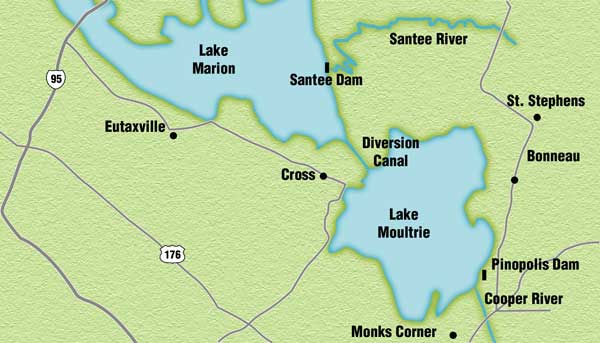
Santee Cooper fishes like the good ol’ days during April’s bass bonanza.
There’s no denying that the bass fishing on the Santee Cooper reservoirs is nothing compared to the “good ol’ days.”The hydrilla is gone, the water has cleared up, and bass can sometimes be hard to come by.
Thank heavens for springtime.
“It’s pretty easy to catch ’em from mid-March through April and to mid-May,” said Ray Sedgwick of Cross, who retired from professional bass fishing last fall after a career that spanned 15 years and featured three appearances in the Bassmasters Classic, the Super Bowl of bass fishing.
“The bass fishing has steadily gotten worse and worse,” said veteran Santee Cooper angler Henry McFadden of Georgetown. “But March and April, that’s still when everybody can catch ’em.”
What happened? The guesses from fishermen are numerous and varied, but most of them center on the removal of the hydrilla that blanked large portions of Lake Moultrie and Lake Marion through the 1980s and 1990s. Then, there’s the clear-water issue — the stained water that spawned great fishing is largely gone, replaced with water that often approaches gin-clear status.
Whatever the reason, it’s different, and fishermen who haven’t kept up with the changes have fallen by the wayside.
“It used to be that we could catch staging or prespawn fish,” said Sedgwick, who owns Canal Lakes Fish Camp on the Diversion Canal that connects 110,600-acre Lake Marion — the “upper lake” — with 61,000-acre Lake Moultrie — the “lower lake.”
“Brushpiles used to be part of our arsenal. You can still catch a few fish around them in 10 to 15 feet of water, but they aren’t as productive as they’ve been in the past.
“Now, bass are hard to catch staging,” he said. “In years past, I put out brushpiles to catch ’em coming in. Now, they just come in from wherever they are to the bed, then, they’re gone.”
But when they invade the shallows, watch out.
“When you get a bite, it will be a good one — at least a 4- or 5-pound fish,” said McFadden, who had the best tutor around as a youngster; his father, Sonny McFadden, one of Santee’s legendary guides. “It’s good those two months, but when its over in May, it gets tough.”
So, if it’s tough nine months out of the year, why is it so easy for such a short period of time? Partly, it’s because the two lakes are rich in shallow cover; lily pads, gator grass, primrose, stump flats and trees — cypress and tupelo. Bass will spawn around those kinds of cover almost exclusively, and catching them is just a matter of being able to key in on productive areas.
McFadden, who is one of the most successful redfish pros in South Carolina, said bass bite early in the day around the vegetation and later in the day around the wood.
“The gator grass is the early bite,” he said. “Up in the day, when the sun gets up, then you go looking around trees. I’ll start in the gator grass and the lily pads early; they’ll hit a floating worm. Then, when the sun gets up, they’ll go to certain trees. There may be 60 trees in an area, and they’ll be on three of them. You just have to know which three.
“My dad has guided all of his life, and I learned bass fishing from him. He showed me the trees that held fish, and I’ve learned that they’ll still produce, year-in and year-out. They still hold fish.”
Is there a trick to picking out the key trees? Sedgwick thinks so; at least there seems to be some rhyme and reason why a handful of trees in an area of 20 surface acres will hold bass while the rest are empty.
“Fish will spawn around trees, at most, two or three feet deep,” he said. “When they get on ’em, you can just about predict which trees they’ll be on. Prime trees are at the mouth of spawning pockets and on the sides as you head into pockets.
“They come in, and we catch ’em on the trees, and then we’re fishing, we go back and catch ’em again on the same trees.”
“If the fish are real shallow, you can just run trees around the edge of the lake, and you’re liable to catch fish on any of them. What plays a factor, too, is that they’ll get on cypress trees, but as soon as the tupelo trees start to green up, they’ll get little green worms on them — they look like caterpillars — and the fish will move to the tupelo trees to eat those little worms when they fall off.”
Even fishing the sure-thing trees has changed, Sedgwick said. “We used to fish trees with Killer B-2s, balsa baits, Texas-rigged worms, spinnerbaits and jigs. Now, if the water is clear — as it usually is — you can’t catch fish on a spinnerbait, but they’ll still hit a jig,” he said. “When the fishing gets tough, when they get a lot of pressure, you have to go to stuff like Trick Worms and little baits like that.
“A few years ago, you had so many nutrients in the water, there was always good color, and you could catch fish in a foot-and-a-half or two feet of water. But the lake doesn’t fish that way anymore because the water’s so clear.”
Strategy doesn’t differ much between the two lakes, even though Sedgwick said that Lake Moultrie used to turn on a little earlier than Lake Marion. However, after the drought and tremendous low water of 2007, Lake Marion turned on first in 2008.
“Usually, the lower lake is two or three weeks ahead; it gets water faster, and it warms up quicker,” Sedgwick said. “But (last) year, the upper lake was ahead of the lower lake. I think that had to do with the upper lake getting its water back first.”
Once you understand how to find bass, it becomes a matter of lures and technique. McFadden said that if the lakes get stained or dingy, or if it’s windy, a spinnerbait or Chatter Bait will work. But when the water’s clear and there’s not much of a ripple on the surface, then it’s jigs and soft plastics like Bush Hogs and other creature baits and finesse worms.
“As far as plastics go, it doesn’t matter what kind you throw,” McFadden said. “Everybody has their preference. A Trick Worm, a Senko — they’ll work. But you can’t fish 20-pound test anymore — the water’s too clear. You’ve got to downsize to 10- to 12-pound test and make real long casts up under the trees and land your bait without much of a splash. Sometimes, I’ll throw way past the tree and pull it back. But you have to make long casts; I’ll use a spinning rod a little bit.”
Make no mistake about it, although Santee Cooper might have fallen off a bit, its bass population remains the equal of most reservoirs across the Southeast.
“We’ve got quality,” Sedgwick said. “We’ve probably got 4- to 8-pound fish as good as anywhere. I don’t know about the quantity — that’s hard to tell. We had a lot of fish die when the grass was killed.”

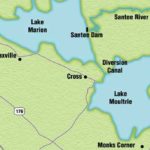
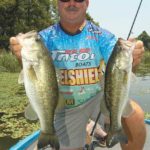
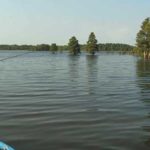
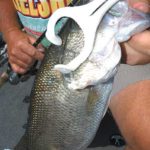
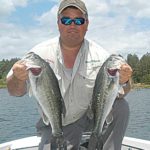
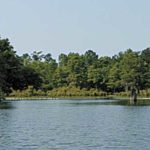



Be the first to comment